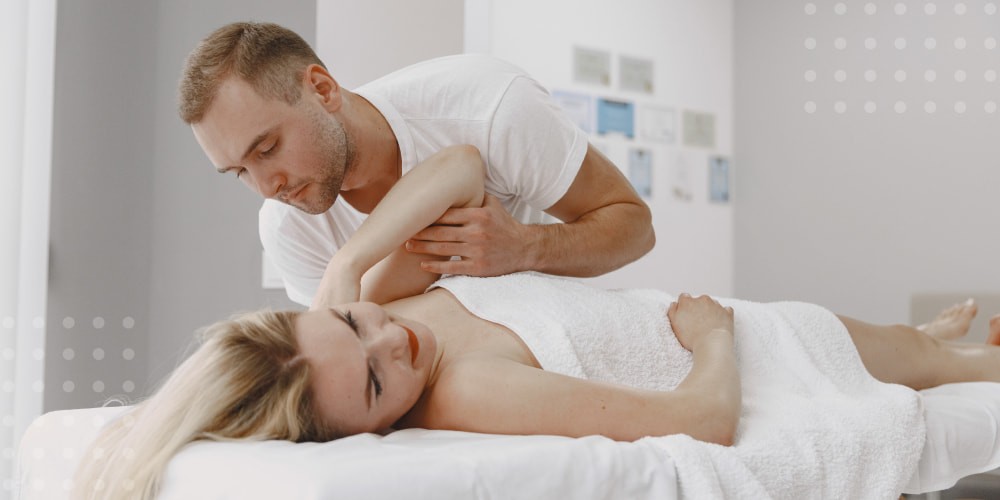We’re sure you’ve heard about strokes and why people over the age of 65 should be afraid of them. However, not everyone knows about the causes of a mini-stroke.
In a mini-stroke, the brain cells malfunction quickly and cause symptoms similar to a stroke. However, the symptoms and signs of a mini-stroke usually disappear within a short time, after which the body can recover.
Like strokes, the cause of a mini-stroke is a blockage in a major artery in the brain. This blockage disrupts the flow of blood and oxygen. The only differences between the strokes are the damage to the body and the length of time that the brain is damaged.
Causes of mini-strokes
The most common causes of mini-strokes are atherosclerosis and clogging of the cerebral artery by a blood clot. Heart disease and diabetes mellitus increase the risk of ischaemic stroke.
Also, a hot climate can contribute to mini-strokes. Hot weather causes dehydration, blood thickens and increases the likelihood of blood clots. People engaged in heavy physical activity over the hot sun can earn sunstrokes and, with them, a stroke.
The most dangerous thing is prolonged sitting in a bent position with your head down. This position increases the load on the cardiovascular system and provokes blood vessel rupture (especially if the patient has an aneurysm – a bulge in the arterial wall). Alcohol abuse, smoking, physical or psychological fatigue, and stress may provoke acute circulatory disorders.
Influence on the likelihood of ischemic stroke may be hereditary. For some people, this factor is manifested in increased blood clotting, which puts them at greater risk of blood clots.
Statistics show that young people are more often faced with mini-strokes, as they are more susceptible to all the above factors.
Symptoms and First Signals of a Mini-Stroke
If you find yourself in a situation where you suspect a mini-stroke in yourself or a neighbor, pay attention to signs such as:
- Weakness and partial numbness (usually seen in one half of the body).
- Dysphysia appears.
- Dizziness (possible flickering in front of the eyes).
- Vision changes (blurred vision).
- Tingling (paresthesias).
- Abnormal taste and/or smell.
- Confusion and disorientation.
- Loss of balance.
- Nausea and vomiting.
- Speech impairment (the person stops in the middle of a sentence, delays answering basic questions, sometimes cannot say their name).
There is a simple test called “hand-face-speech” to recognize a mini-stroke. The three words reflect the person’s movements to reproduce: raise his or her hands, smile, and say a phrase.
After a stroke, the person will not hold both arms in a perpendicular position to the body. One will fall over. When smiling, one side of the face will noticeably “sag,” and there will be asymmetry. The speech will be slurred and slurred.
The effects of a mini-stroke on the body
Mini-strokes recur in one-third of recent survivors. One in ten patients may develop a stroke within three months of a mini-stroke. Sometimes it happens within two days of the first occurrence.
Every micro stroke is a blow to a person’s health and immunity. Even if symptoms recede without therapy, it indicates that the nerve cells are suffering from an acute lack of oxygen and are dying off.
Patients after mini-strokes have memory impairment, signs of dementia, and character changes. It is not uncommon for people who have had a stroke to have a “silent stroke” the next time they have a stroke: in which there are no symptoms of the attack, but the circulatory disorder causes serious damage to the nerve cells.
How to eliminate a mini-stroke without consequences for the body?
Fortunately, the answer is yes. A mini-stroke can be eliminated without consequences for up to 4.5 hours. This medical intervention is called a “Therapeutic Window.”
The safest and best option is to go as soon as possible to a vascular center that specializes in treating strokes.
After that, the patient goes to the hospital where they get a brain MRI, ultrasound of cerebral vessels (supplying the brain), blood and heart tests, which give a complete picture of the risk of a major stroke.
Statistics show that 60% of mini-stroke survivors may develop a full-fledged. That’s why the follow-up phase is followed by ischemic or hemorrhagic stroke treatment aimed at restoring regular blood supply to the brain.
Recovering from a mini-stroke in a nursing facility
The patient is examined to determine the extent of brain damage. First of all, it is a thrombotic stroke. For this purpose, computer or magnetic resonance imaging is performed. Then, medication treatment is started to improve blood flow to the affected area of the brain, relieve edema, maintain stable heart function, etc.
After that, the process of direct rehabilitation begins, which consists of several stages. From the first days of the patient’s arrival at a medical institution, several doctors and specialists work with them: a neurologist, a rehabilitologist, a masseur, etc. During this period, their main task is to start restoring the functions of the organism so that the person can take care of themself in the future.
In the second stage, rehabilitation aims to restore speech, motor, and cognitive functions. To do this, they prescribe therapeutic exercises, massage, physiotherapy, and work with a psychologist and speech therapist.
Restoration of fine motor skills and self-care skills is the third stage of rehabilitation when the patient moves independently. It may last from several months to several years, depending on the severity of the consequences of the stroke.
Preventing mini-strokes
The patient will have to take regular preventive measures for the possible causes of mini-strokes to protect his or her health:
- Monitor cholesterol levels.
- Check blood pressure.
- Do physical activity and exercise often.
- Give up unhealthy habits.
- Follow all doctor’s recommendations.
There are different reasons for mini-strokes, but more and more often, people are not only those aged 70+ but also younger.
Exercise, don’t get nervous over anything, and always be on the positive side. Take care of yourself!












Please, leave your review
1 Comment
Gladys Oliver
30/07/2023
Great information. My primary doctor says I don’t need a nephrologist. I had 6 mini stoners according to the CTS
What should I do.
Write a comment: